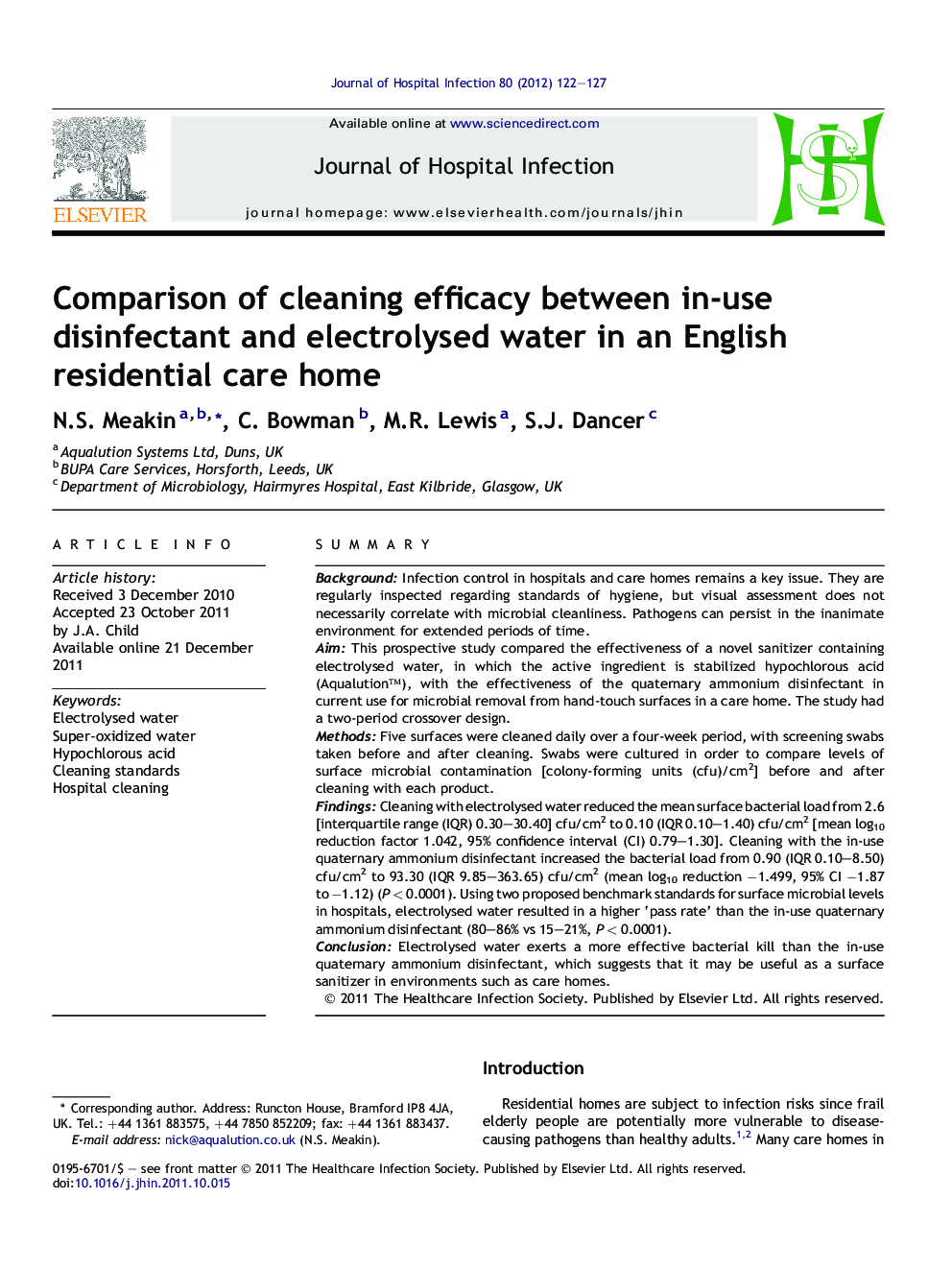| Article ID | Journal | Published Year | Pages | File Type |
|---|---|---|---|---|
| 3372545 | Journal of Hospital Infection | 2012 | 6 Pages |
SummaryBackgroundInfection control in hospitals and care homes remains a key issue. They are regularly inspected regarding standards of hygiene, but visual assessment does not necessarily correlate with microbial cleanliness. Pathogens can persist in the inanimate environment for extended periods of time.AimThis prospective study compared the effectiveness of a novel sanitizer containing electrolysed water, in which the active ingredient is stabilized hypochlorous acid (Aqualution™), with the effectiveness of the quaternary ammonium disinfectant in current use for microbial removal from hand-touch surfaces in a care home. The study had a two-period crossover design.MethodsFive surfaces were cleaned daily over a four-week period, with screening swabs taken before and after cleaning. Swabs were cultured in order to compare levels of surface microbial contamination [colony-forming units (cfu)/cm2] before and after cleaning with each product.FindingsCleaning with electrolysed water reduced the mean surface bacterial load from 2.6 [interquartile range (IQR) 0.30–30.40] cfu/cm2 to 0.10 (IQR 0.10–1.40) cfu/cm2 [mean log10 reduction factor 1.042, 95% confidence interval (CI) 0.79–1.30]. Cleaning with the in-use quaternary ammonium disinfectant increased the bacterial load from 0.90 (IQR 0.10–8.50) cfu/cm2 to 93.30 (IQR 9.85–363.65) cfu/cm2 (mean log10 reduction −1.499, 95% CI −1.87 to −1.12) (P < 0.0001). Using two proposed benchmark standards for surface microbial levels in hospitals, electrolysed water resulted in a higher ‘pass rate’ than the in-use quaternary ammonium disinfectant (80–86% vs 15–21%, P < 0.0001).ConclusionElectrolysed water exerts a more effective bacterial kill than the in-use quaternary ammonium disinfectant, which suggests that it may be useful as a surface sanitizer in environments such as care homes.
